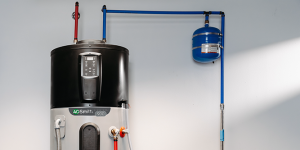You’ll sometimes hear renting a home referred to as “throwing money away,” but I assure you, this is not the case. Renting just means paying for a roof over your head, and it comes with a lot of benefits, including lower costs and greater flexibility. Homeownership is more popular with Americans, however — about two-thirds own a home, and buying one is a dream for many people.
As it stands, the current market might be deterring some prospective buyers. The company Avail (which creates software for landlords) found recently that just 30% of renters out of those surveyed are currently aspiring to become homeowners in the next year.
This sure isn’t an easy housing market to break into. The National Association of Realtors reports that in June 2023, there was just a three-month supply of homes for sale (and it takes at least a four- to six-month supply to equalize the market between buyers and sellers). Couple this with higher mortgage rates (the average rate on a 30-year fixed-rate mortgage is 6.78% as of this writing, per Freddie Mac), and the market looks downright impossible for a lot of people. If you think you’re ready and have the financial bona fides to make buying a possibility, here’s a few ways you can get ready to buy in the near term.
1. Save money for a down payment and other buying costs
While a down payment will not be your only cost to buy a home, it is likely to be your biggest. You don’t have to put 20% down (although doing so means you won’t have to pay for private mortgage insurance), but it’s wise to make some kind of down payment. Having money to put down will reassure mortgage lenders that you have some “skin in the game,” which might lead to a lower interest rate. Plus, it’ll lessen the odds you end up underwater on your mortgage (meaning you owe more than the home is worth). In addition to a down payment, you’ll also need money for closing costs, a home inspection, and more.
2. Get your credit in shape
Your credit score is a major factor in whether you can qualify for a mortgage loan. The bare minimum for a mortgage is generally regarded as 620. Individual lenders can and do set their own requirements, and the higher your credit score, the better selection of lenders you’ll have to choose from when it comes time to apply for pre-approvals.
You can improve your credit score by paying down existing debt and making all debt payments on time, every month (your payment history makes up 35% of your FICO® Score). Get a copy of your credit report from all three major credit bureaus (free every week until the end of 2023) and look for anything that looks hinky. If you spot an error (like an account that was closed in good standing, but shows as delinquent on your report), you can dispute it. Fixing credit report errors can improve your credit score.
More: Check out our picks for the best mortgage lenders
3. Decide what you can afford
It helps to go into the home-buying process with some idea of what you can actually afford to spend for housing. The costs of homeownership go beyond just your mortgage payment, of course, but it’s best to keep your monthly housing costs to 28% of your income or less. A mortgage calculator can help you run the numbers and see how much you can afford to spend every month.
4. Consider relocating
Finally, if you’re renting in an area where the home prices are too high to let you get on the property ladder, you might want to consider moving, if you can. This is often easier for people who rent, as we don’t already have a home to sell and may not have created such deep roots in our current city. If leaving the area entirely isn’t feasible, is there a nearby community that is less expensive than where you are now? You might want to check home prices in surrounding areas to find neighborhoods to target in your search.
If you’re renting, it might feel like a particularly steep climb to reach homeownership. Making the above moves can put you in the best possible position to land a mortgage loan and a new home, though.
Read the full article here














